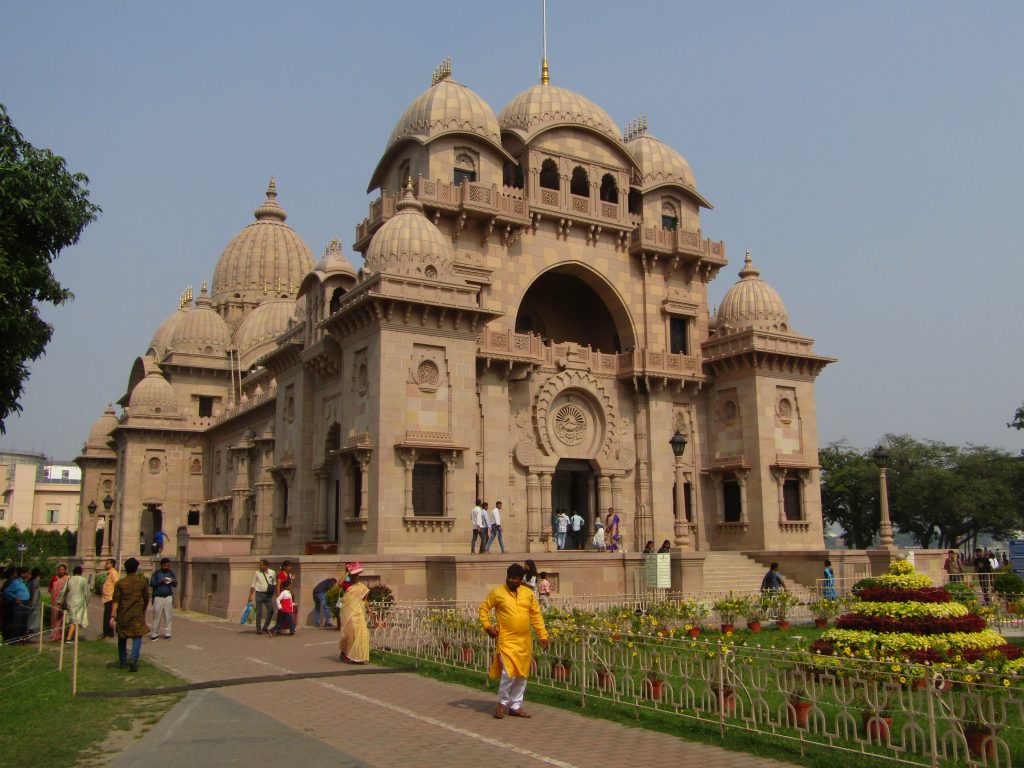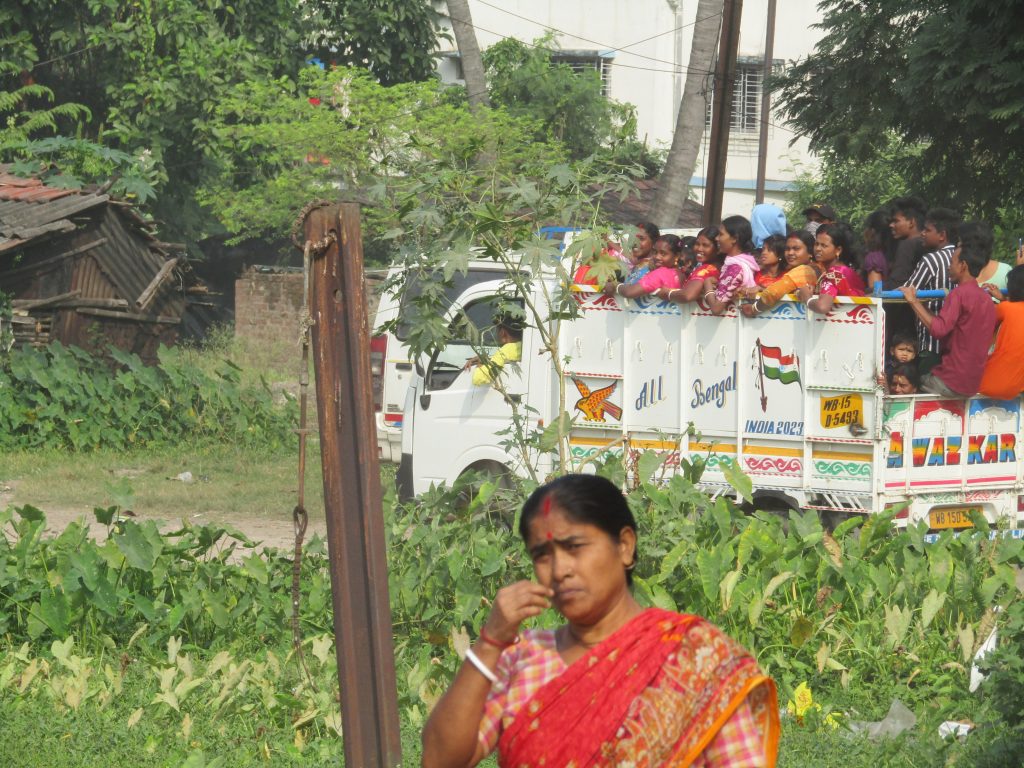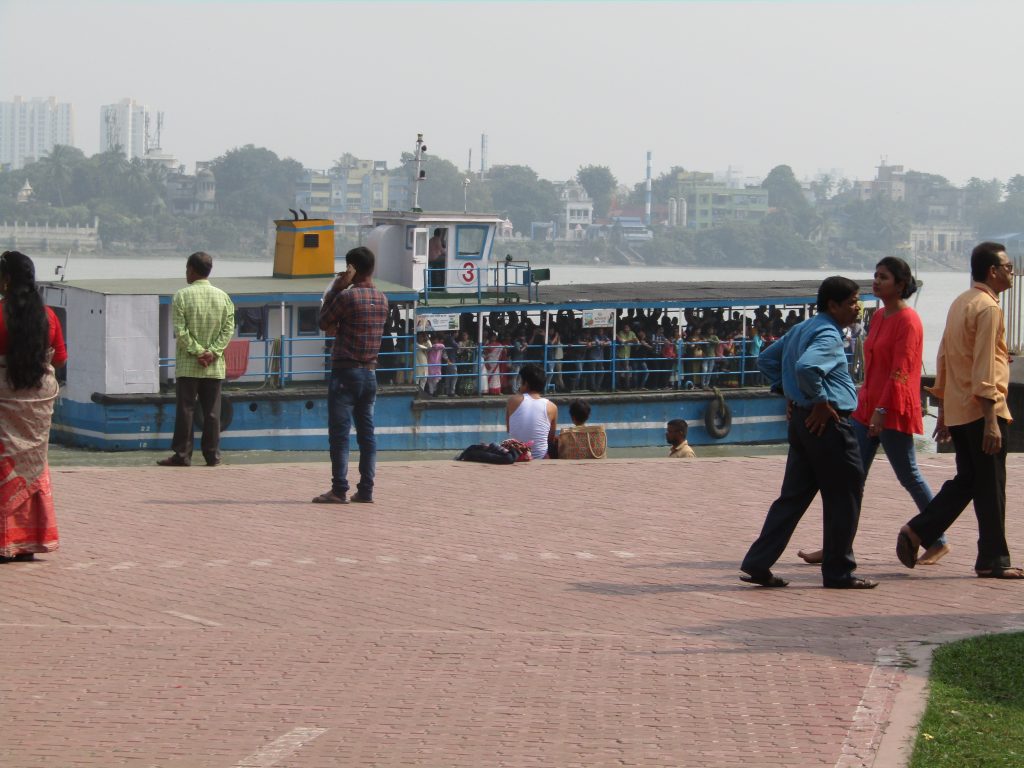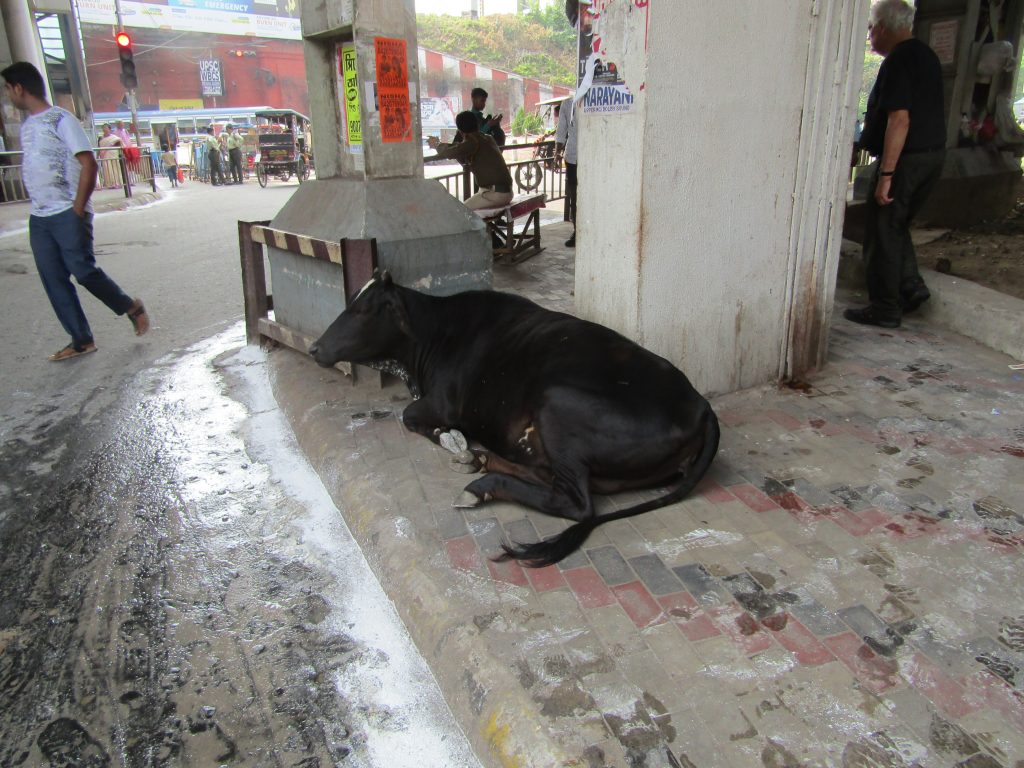



We’d had one try, we’d set off from our hotel in Kolkata early (7.30 am) heading for a railway station about three quarters of an hour’s drive away. Our bus couldn’t get through the narrow streets so we waited in the bus a little way from the station whilst our guide went to check on the train.
When he returned the news wasn’t good. Our train had had engine trouble earlier in its journey. It had been diverted to pick up another engine. Now it would be five and a half hours late to our station.
No problem! This is India! We set off to make two unscheduled visits to local tourist sites. With the travelling this used up sufficient spare time and we set off back to our hotel where we sat in the restaurant and ate our packed lunches – originally due to be eaten on the train.
Our guide was given an estimated arrival time for the train at our station of 3.30 pm this afternoon and so it was intended that we’d do a bit of a tour of Kolkata in the bus on the way back there and be in plenty of time to catch the train. That was ok until he checked again with the Station Master once we were on the bus – the train now had a 2.40 pm arrival – 50 minutes earlier than expected.
All credit to the bus driver, he weaved and dodged through the crazy traffic. All Kolkata traffic uses the horn to give notice that they’re coming through. Our driver hadn’t seemed to be joining in with this ritual previously until know – mainly I expect due to the age of the bus. There seemed to be an emergency “coming through” code of 8 beeps. Bikes, motorbikes, cars, lorries and busses all let him pass.
He was going much faster than he’d previously done during the morning. This was obviously good for a reduced travel time, not great for the ride. Going at the steady speed earlier it was clear that the bus had no working suspension and certainly no shock absorbers. The increased speed only intensified every bump and pothole in the road.
The bus arrived at the nearest spot to the station that it could reach. As if by magic a stream of tuk-tuks drew up. Passengers and luggage were transferred quickly and the tuk-tuks raced off for the station. We arrived, decamped and sped off – presumably someone was going to pay the drivers. The train was due in any moment. It was going to be platform two, over the bridge. Off we went, dragging our cases up and over to the other platform.
By the time the train drew in all passengers and their luggage were accounted for. We also now had packed dinners for eating on the train as, apparently, we wouldn’t be reaching our hotel in time for dinner. We hurried along the platform to find our carriage. Once inside we found our allocated seats and settled down.
Sorted you’d think. Well, the day before this our itinerary had been changed. We were meant to be travelling on the Monday afternoon train from Kolkata that took eight or nine hours to reach to Siliguri. The rearranged itinerary had us travelling out on Sunday. Our Sunday morning train was not the “fast” train. Allowing for the delay we’d already encountered our estimated arrival was now 2 am. We then had a short journey to our hotel.
Our train was a sleeper train rather than the comfortable seated train we’d expected. This explained some of the comments our guide had been making earlier about the train accommodation. After eating what they wanted from the packed meal most people settled down for a night’s sleep. Some achieved a little rest, even sleep, most didn’t. Some started to feel unwell – was it the packed lunch that had been carried around in the hot bus all morning? Needless to say, it wasn’t the enjoyable afternoon train trip that we’d be expecting.
The train arrived at New Jalpaiguri Station at 1.26 am the next morning, having got on the train (just!) at 2.44 pm the afternoon before. We arrived at the Royal Sarovar Portico hotel in Siliguri at 2.07 am. We were allocated rooms and we collapsed into bed. We left after breakfast for Darjeeling, this time in minibuses up narrow switchback mountain roads but that’s another story.